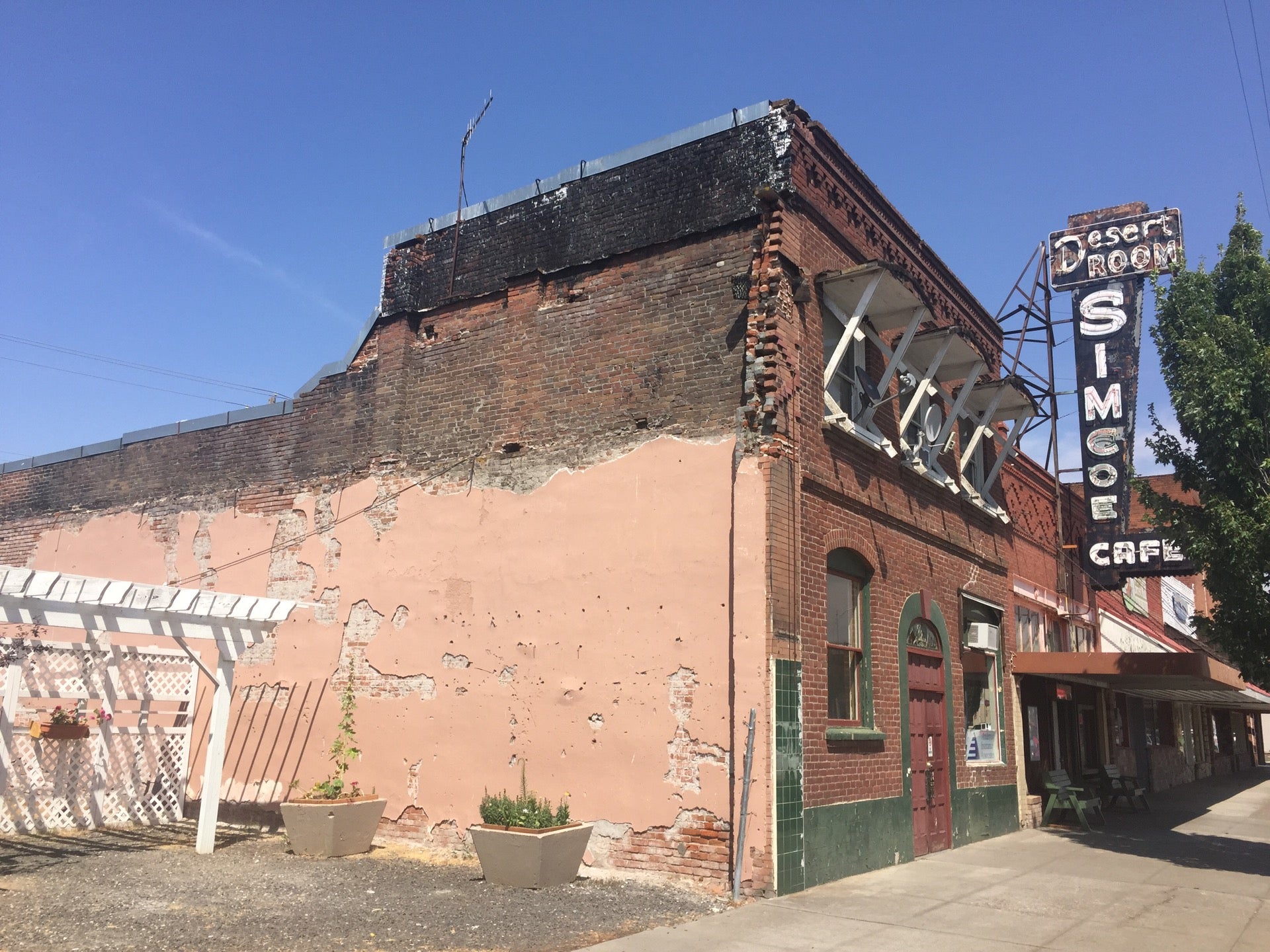
Here’s a 1200-word article explaining the Yakama Nation reservation map in Washington, focusing on history and identity, suitable for a travel and history education blog.
>
Beyond the Border: Unearthing History and Identity on the Yakama Nation Reservation Map
A map is more than just lines on paper; it’s a narrative, a testament to history, and a living blueprint of identity. For the Yakama Nation, a sovereign tribal government in south-central Washington State, their reservation map is precisely this – a vibrant, complex document that tells a profound story of resilience, cultural survival, and deep spiritual connection to the land. This isn’t just a territory; it’s a homeland, etched with the indelible marks of centuries of tradition, struggle, and enduring sovereignty.

For the curious traveler or the earnest student of history, understanding the Yakama Nation reservation map is a journey into the heart of Indigenous America. It’s an opportunity to look beyond the superficial and grasp the intricate tapestry of a people whose past is undeniably linked to their present, and whose future is woven into every contour and waterway of their ancestral lands.
The Yakama Nation: A Confederation Forged by Landscape
Before we delve into the map’s specifics, it’s crucial to understand who the Yakama Nation is. The term "Yakama" itself refers to a confederation of fourteen distinct tribes and bands who historically occupied a vast territory of 12 million acres across what is now south-central Washington and northern Oregon. These included the Palouse, Pisquouse, Wenatchapam, Klickitat, Klinquit, Kow-was-say-ee, Li-ay-was, Skin-pah, Shy-iks, Oche-chotes, Kah-milt-pah, Se-ap-cat, Ene-wash-et, and the Yakama (proper).
Their traditional lands were defined by the Columbia River system, the eastern slopes of the Cascade Mountains, and the diverse ecosystems found within – from verdant forests to arid high desert. These were peoples of the salmon, the root gatherers, the berry pickers, and the hunters of deer and elk. Their lives were semi-nomadic, following seasonal resources, connected by complex trade networks, shared languages (primarily Sahaptin dialects like Ichishkíin), and deep spiritual reverence for the land and its creatures. This intimate relationship with the land, its resources, and its spiritual significance is the bedrock of Yakama identity, a connection that the reservation map both delineates and symbolizes.

The Treaty of 1855: A Map Drawn in Promises and Conflict
The current boundaries of the Yakama Nation Reservation are a direct result of the Treaty of 1855, a pivotal and contentious agreement with the United States government. As American westward expansion gained momentum in the mid-19th century, fueled by Manifest Destiny and the Oregon Trail, pressure mounted on Indigenous lands. Isaac I. Stevens, the first governor and superintendent of Indian Affairs for the Washington Territory, was tasked with negotiating treaties to open up vast tracts for white settlement.
The Yakama Treaty Council, held at Walla Walla, was a monumental gathering. Chief Kamiakin, a prominent leader, initially resisted the land cession. However, under immense pressure and with promises of protected lands and perpetual rights, the confederated tribes agreed to cede approximately 10.8 million acres of their ancestral domain. In return, the United States reserved 1.3 million acres for the exclusive use of the Yakama Nation, promising to protect their traditional hunting, fishing, and gathering rights "in common" at all usual and accustomed places, both on and off the reservation.
This treaty, though it established the reservation, immediately became a source of conflict. Misunderstandings, broken promises, and the rapid encroachment of settlers led to the Yakama War (1855-1858), a brutal conflict that underscored the profound cultural chasm and the U.S. government’s often-disingenuous approach to treaty obligations. The Yakama Nation’s resilience during this period solidified their resolve to protect their land and their way of life, an ethos that continues to define them.

Reading the Yakama Nation Reservation Map: A Landscape of Sovereignty
Today, the Yakama Nation Reservation spans approximately 1.3 million acres, making it one of the largest Indigenous reservations in the Pacific Northwest. Located primarily in Yakima County, with portions extending into Klickitat and Lewis Counties, its map is a visual representation of Yakama sovereignty and historical endurance.
1. The Boundaries: A Legacy of Treaty and Resilience
The most striking feature of the map is its sheer scale. These aren’t just lines; they represent the land base reserved by treaty, a testament to the Yakama Nation’s legal status as a sovereign nation within the United States. While the original 12 million acres were vast, the 1.3 million acres of the reservation remain a substantial and critically important land base for the Yakama people. These boundaries define the jurisdiction of the Yakama Nation government, its laws, and its self-determination.
2. Geographical Diversity: A Microcosm of the Pacific Northwest
The reservation map reveals an incredible diversity of landscapes, reflecting the traditional resource areas that sustained the confederated tribes for millennia:

- The Eastern Slopes of the Cascades: The western portion of the reservation rises into the foothills of the Cascade Mountains, characterized by dense forests of pine, fir, and cedar. These areas are vital for timber resources, hunting grounds, and traditional plant gathering.
- The Simcoe Mountains: Running east to west through the southern part of the reservation, these mountains offer varied terrain and serve as important cultural and spiritual sites.
- The Yakima River Basin: The Yakima River, though not entirely within the reservation boundaries, is a critical artery that flows through its northern reaches. Its tributaries, along with other streams and springs, provide essential water for irrigation, fish habitats, and sustenance.
- High Desert and Sagebrush Steppe: Much of the eastern and central parts of the reservation consist of arid to semi-arid landscapes, characterized by sagebrush, bitterbrush, and grasslands. These areas are historically important for root gathering (like camas and kouse), hunting, and grazing.
- Mount Adams (Pahto): Though largely outside the official reservation boundaries to the west, Mount Adams, known as Pahto in Ichishkíin, is a profoundly sacred mountain for the Yakama Nation. Its presence looms large over the western parts of the reservation, symbolizing spiritual power, ancestral connections, and traditional resource gathering. Its spiritual significance extends far beyond any drawn line on a map.
3. Key Settlements and Cultural Hubs:
- Toppenish: Often considered the capital of the Yakama Nation, Toppenish is a vital hub. The map would show its central location within the reservation. Here, visitors can find the Yakama Nation Museum and Cultural Heritage Center, an essential destination for anyone seeking to understand Yakama history, art, and traditions. The town is also famous for its vibrant murals depicting Yakama history and culture.
- Yakama Agency: Historically, this area served as the administrative center for the U.S. Indian Agency. Today, it remains an important governmental and community site.
- White Swan, Harrah, Parker: These smaller communities scattered across the reservation represent the homes and gathering places for Yakama families, where cultural practices are maintained and passed down.
4. Invisible Features: The Layers of Identity
What the map doesn’t explicitly show, but implicitly represents, are the layers of Yakama identity woven into the land:
- Treaty Fishing Sites: Though not marked with specific icons, every river and stream on and off the reservation speaks to the Yakama’s enduring treaty rights to fish for salmon, steelhead, and other species. These sites are not just places for resource extraction; they are ceremonial grounds, places of learning, and vital anchors of cultural practice.
- Traditional Gathering Areas: The forests, meadows, and desert lands are still used for gathering traditional foods like huckleberries, chokecherries, and various roots. These practices reinforce a reciprocal relationship with the land and are fundamental to Yakama food sovereignty and cultural health.
- Sacred Sites: Beyond Pahto, countless un-marked places on the map hold spiritual significance – ancestral burial grounds, vision quest sites, and locations tied to creation stories and oral traditions. These are deeply personal and respected spaces that define the spiritual geography of the Yakama people.
- Resource Management: The map, by delineating the reservation, also highlights the Yakama Nation’s self-governance over its natural resources. This includes managing timber harvesting, water rights (a constant point of contention and advocacy), wildlife, and environmental protection efforts, all guided by traditional ecological knowledge and modern science.
Identity: Forged in Land, Language, and Law
The Yakama Nation reservation map is a powerful symbol of their identity, an identity that is inherently tied to the land, their language (Ichishkíin), and their status as a sovereign nation.
- Land as Kin: For the Yakama, the land is not merely property; it is a living entity, a relative that provides sustenance and spiritual guidance. This deep connection permeates every aspect of their identity, from ceremonies and traditional stories to contemporary land management practices. The map, therefore, isn’t just a survey; it’s a family tree, a sacred text.
- Sovereignty as Self-Determination: The boundaries on the map represent a distinct political entity with its own government, laws, police force, and courts. The Yakama Nation exercises its inherent right to self-governance, making decisions about its people, resources, and future. This sovereignty, though challenged throughout history, remains a cornerstone of their identity and strength.
- Cultural Resurgence: Despite historical attempts at forced assimilation, the Yakama Nation has experienced a vibrant cultural resurgence. Language immersion programs, the continuation of traditional ceremonies like the Root Feast and Salmon Feast, and the active teaching of history and cultural practices to younger generations ensure that the stories embedded in the map continue to be told.
Experiencing the Yakama Nation: A Call for Respectful Engagement
For the traveler or history enthusiast, visiting the Yakama Nation Reservation offers an unparalleled opportunity to engage with a living, thriving Indigenous culture. However, respectful engagement is paramount.
- Visit the Yakama Nation Museum: This is the ideal starting point to gain a foundational understanding of Yakama history, art, and contemporary life.
- Support Tribal Businesses: Look for businesses owned and operated by the Yakama Nation or its members.
- Respect Private Property and Sacred Sites: Much of the reservation is private tribal land. Always be aware of signs, ask permission if unsure, and respect the privacy and sacredness of the land.
- Attend Public Events: If the opportunity arises to attend a public powwow or other cultural event, do so with an open mind, a willingness to learn, and respect for traditions.
- Learn and Listen: Read books, listen to tribal elders’ stories (if shared publicly), and approach the experience with humility.
The Yakama Nation reservation map is not a static artifact of the past, but a dynamic, living document. It tells the story of a people who have faced immense challenges yet continue to thrive, holding fast to their identity, their language, and their profound connection to the land. To truly understand this map is to understand the enduring spirit of the Yakama Nation – a journey well worth taking.
